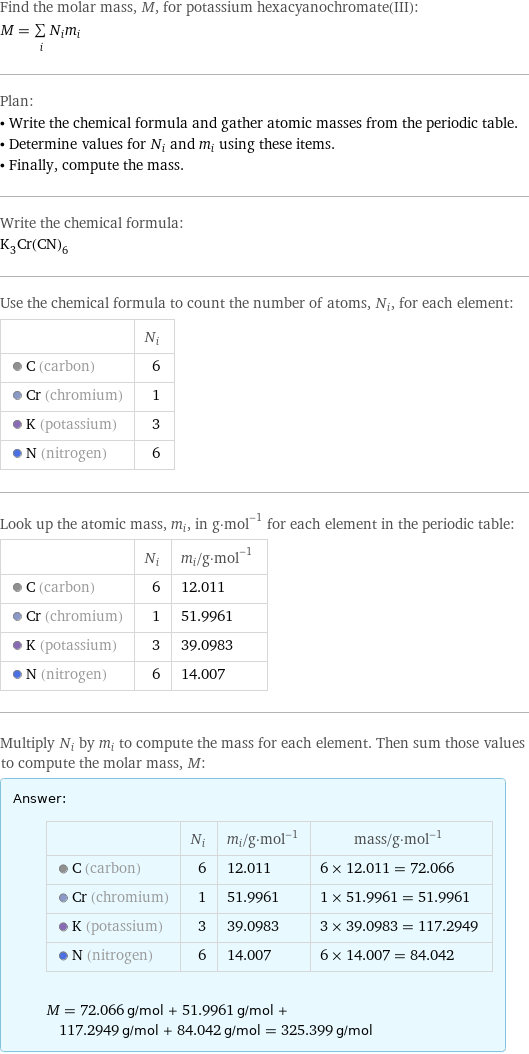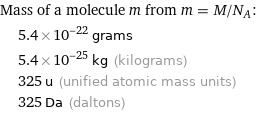Input interpretation

potassium hexacyanochromate(III) | molar mass
Result

Find the molar mass, M, for potassium hexacyanochromate(III): M = sum _iN_im_i Plan: • Write the chemical formula and gather atomic masses from the periodic table. • Determine values for N_i and m_i using these items. • Finally, compute the mass. Write the chemical formula: K_3Cr(CN)_6 Use the chemical formula to count the number of atoms, N_i, for each element: | N_i C (carbon) | 6 Cr (chromium) | 1 K (potassium) | 3 N (nitrogen) | 6 Look up the atomic mass, m_i, in g·mol^(-1) for each element in the periodic table: | N_i | m_i/g·mol^(-1) C (carbon) | 6 | 12.011 Cr (chromium) | 1 | 51.9961 K (potassium) | 3 | 39.0983 N (nitrogen) | 6 | 14.007 Multiply N_i by m_i to compute the mass for each element. Then sum those values to compute the molar mass, M: Answer: | | | N_i | m_i/g·mol^(-1) | mass/g·mol^(-1) C (carbon) | 6 | 12.011 | 6 × 12.011 = 72.066 Cr (chromium) | 1 | 51.9961 | 1 × 51.9961 = 51.9961 K (potassium) | 3 | 39.0983 | 3 × 39.0983 = 117.2949 N (nitrogen) | 6 | 14.007 | 6 × 14.007 = 84.042 M = 72.066 g/mol + 51.9961 g/mol + 117.2949 g/mol + 84.042 g/mol = 325.399 g/mol
Unit conversion

0.3254 kg/mol (kilograms per mole)
Comparisons

≈ 0.45 × molar mass of fullerene ( ≈ 721 g/mol )

≈ 1.7 × molar mass of caffeine ( ≈ 194 g/mol )

≈ 5.6 × molar mass of sodium chloride ( ≈ 58 g/mol )
Corresponding quantities

Mass of a molecule m from m = M/N_A: | 5.4×10^-22 grams | 5.4×10^-25 kg (kilograms) | 325 u (unified atomic mass units) | 325 Da (daltons)

Relative molecular mass M_r from M_r = M_u/M: | 325